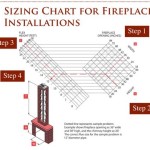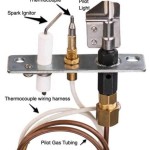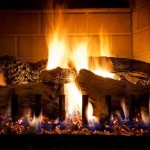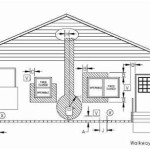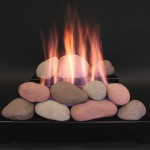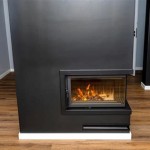Fake Firewood: A Comprehensive Guide for Fireplace Enthusiasts
The allure of a crackling fireplace is undeniable, offering warmth, ambiance, and a sense of cozy comfort. However, traditional firewood presents challenges, including storage needs, insect infestations, creosote buildup, and environmental concerns linked to deforestation. Consequently, artificial or fake firewood has emerged as a viable alternative, offering a clean, convenient, and environmentally responsible option for enjoying the pleasures of a fire.
Fake firewood, also known as artificial logs or gas logs, are designed to replicate the appearance and, in some cases, the burning effect of natural wood. These logs are typically crafted from ceramic, concrete, or refractory clay, materials chosen for their ability to withstand high temperatures and radiate heat effectively. They are designed for use with either natural gas or propane fireplaces, offering a consistent and controllable flame without the mess and hassle associated with traditional wood-burning.
The development of fake firewood has progressed significantly. Early versions focused primarily on functionality, prioritizing efficient heat output over aesthetic appeal. Modern iterations, however, boast intricate designs and realistic textures, often molded from actual wood logs to achieve an authentic appearance. Some even incorporate features like glowing embers and flickering flames to further enhance the illusion of a real wood fire.
Understanding the Different Types of Fake Firewood
The market offers various types of fake firewood, each with its unique characteristics and suitability for different fireplaces. Understanding these distinctions is crucial for selecting the best option for individual needs and preferences. The primary variations lie in the material composition and the fuel source they are designed to utilize.
Ceramic Logs: These are among the most popular types of fake firewood. Ceramic logs are crafted from a lightweight, porous ceramic material that allows for efficient heat radiation. They are known for their realistic appearance and are available in a wide range of styles and sizes to suit various fireplace dimensions. Ceramic logs are typically designed for use with gas fireplaces, offering a clean and consistent flame.
Concrete Logs: Concrete logs are a more durable option compared to ceramic logs. They are made from a heavy-duty concrete mixture that can withstand higher temperatures and provide a longer lifespan. While not always as aesthetically intricate as ceramic logs, concrete logs offer excellent heat retention and are suitable for both natural gas and propane fireplaces. Their substantial weight contributes to their stability within the firebox.
Refractory Clay Logs: Refractory clay logs are known for their exceptional heat resistance. They are made from a specialized clay mixture designed to withstand extreme temperatures without cracking or warping. This makes them a suitable option for high-heat fireplaces or those that experience prolonged burning. Like concrete logs, refractory clay logs may not possess the same level of detail as ceramic logs but offer superior durability.
Vented vs. Vent-Free Logs: Another important distinction lies between vented and vent-free log sets. Vented log sets are designed for use in fireplaces with a functioning chimney, allowing for the safe expulsion of combustion byproducts. Vent-free log sets, on the other hand, are designed to burn more cleanly and efficiently, minimizing the production of harmful emissions and allowing them to be used in fireplaces without a chimney. However, vent-free log sets require proper ventilation and adherence to safety guidelines to prevent carbon monoxide buildup.
Advantages of Using Fake Firewood
Fake firewood offers a compelling array of benefits compared to traditional wood-burning fireplaces. These advantages encompass aspects related to convenience, environmental impact, safety, and overall cost-effectiveness. While the initial investment might be higher, the long-term benefits often outweigh the upfront expenses.
Convenience and Cleanliness: One of the most significant advantages of fake firewood is the convenience it offers. There is no need to chop, stack, or store wood, eliminating the physical labor and space requirements associated with traditional firewood. Furthermore, fake firewood eliminates the mess of wood ash, bark, and debris, simplifying cleanup and maintenance. The consistent fuel source also eliminates the need to constantly tend to the fire, offering a more hands-off and enjoyable experience.
Environmental Benefits: Fake firewood is generally considered a more environmentally friendly option than burning wood. Traditional wood-burning releases pollutants into the atmosphere, contributing to air pollution and greenhouse gas emissions. While the production of artificial logs does have an environmental footprint, the overall impact is typically lower than that of harvesting, transporting, and burning wood. Additionally, the use of gas fireplaces can often be regulated, ensuring more efficient and cleaner burning processes compared to open wood fires.
Safety Considerations: Fake firewood reduces the risk of certain safety hazards associated with wood-burning fireplaces. The risk of chimney fires is significantly lower with gas fireplaces, as there is less creosote buildup. The controlled flame of a gas fireplace also minimizes the risk of sparks escaping and igniting nearby objects. Properly installed and maintained gas fireplaces offer a safer alternative to traditional wood-burning, particularly for homeowners with children or pets.
Cost-Effectiveness: While the initial cost of purchasing and installing a gas fireplace with fake firewood may be higher than simply using a wood-burning fireplace, the long-term costs can be lower. There are no ongoing costs for purchasing firewood and the improved efficiency of gas fireplaces compared to wood burning can reduce heating bills. Furthermore, the reduced maintenance and cleaning required with fake firewood can save time and money over the lifespan of the fireplace.
Factors to Consider When Choosing Fake Firewood
Selecting the right fake firewood involves carefully considering several factors to ensure optimal performance, aesthetic appeal, and safety. The specific characteristics of the fireplace, the user's preferences, and budget constraints all play a role in the decision-making process. A thorough assessment of these factors is crucial for making an informed choice.
Fireplace Type and Size: The type of fireplace, whether it is a vented gas fireplace, a vent-free gas fireplace, or a converted wood-burning fireplace, will dictate the type of fake firewood that can be used. Moreover, the size of the firebox must be considered to ensure that the log set fits properly and allows for adequate airflow. Measure the dimensions of the firebox carefully before purchasing a log set to avoid compatibility issues.
Fuel Source: Fake firewood is designed for use with either natural gas or propane fireplaces. Ensure that the chosen log set is compatible with the available fuel source. Using the wrong type of log set can result in inefficient burning, incomplete combustion, and potential safety hazards. Always refer to the manufacturer's instructions to confirm fuel compatibility.
Aesthetic Preferences: Fake firewood is available in a wide range of styles, colors, and textures to match different décor preferences. Consider the overall aesthetic of the room and choose a log set that complements the existing design. Look for log sets that feature realistic detailing, such as wood grain patterns, bark textures, and ember effects, to enhance the visual appeal. Some log sets also offer remote control functionality, allowing for adjustments to flame height and ember intensity.
Safety Certifications: When purchasing fake firewood, look for products that have been certified by reputable safety organizations, such as the American Gas Association (AGA) or Underwriters Laboratories (UL). These certifications indicate that the log set has been tested and meets established safety standards. Choosing certified products helps ensure safe and reliable operation.
Budget Considerations: The cost of fake firewood can vary depending on the material, size, and features. Set a budget before starting the shopping process and compare prices from different retailers to find the best value. Keep in mind that investing in a higher-quality log set can often result in a longer lifespan and better performance in the long run.
By carefully considering these factors, homeowners can select the perfect fake firewood to enhance the ambiance and warmth of their fireplaces while enjoying the convenience, safety, and environmental benefits it offers.

All About Artificial Firelogs Raleigh Nc Mr Smokestack Chimney Service

Faux Log Stack

How To Make A Faux Fireplace Insert With Real Logs Interior Frugalista

Pin By Jennie Roe On Cabin In The Woods Fake Fireplace Logs Gas

Diy Faux Fireplace Logs Home Family

Fake Logs For Gas Fireplace Natural

24 Cozy Faux Fireplace And Mantel Decor Ideas Shelterness

These Beautiful Fake Metal Logs Are A Perfect Addition To Your Existing Outdoor Fire Tables

Fake Wood In Fireplace Facade Faux Diy

Faux Log Stack
Related Posts


